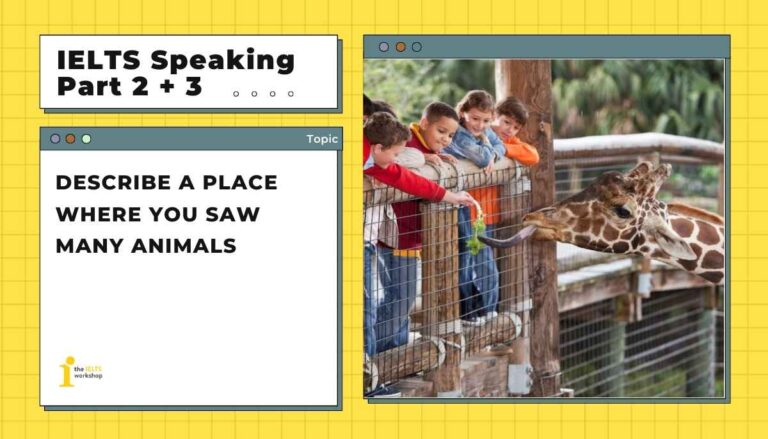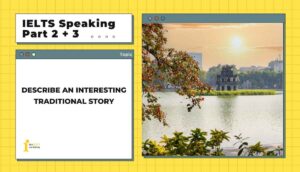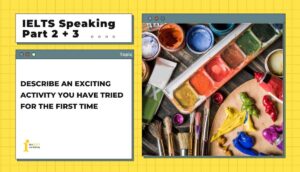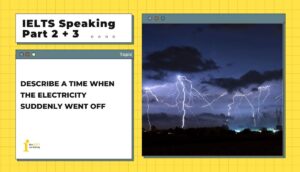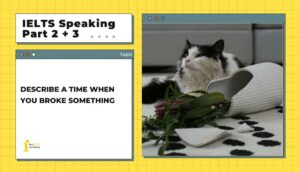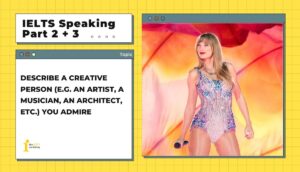Bài mẫu chủ đề “Describe a place where you saw many animals” của thầy Nam Phạm cung cấp ý tưởng mạch lạc, từ vựng đa dạng và chiến lược trả lời hiệu quả cho IELTS Speaking Part 2.
Part 2: Describe a place where you saw many animals
You should say
- where it is
- what the place looked like
- what you did there
- and which animals you found particularly interesting.
1. Bài mẫu (Sample)
Back in high school, I had a chance to visit the Singapore Zoo with my family. The zoo is well-known for having an open-concept layout, with landscaped enclosures and hidden moats instead of cages. It is as if visitors are walking through a real rainforest habitat rather than staring at animals through bars. Before we even got off the bus, I remembered being filled with curiosity and excitement, wanting to see whether the place really lived up to the hype.
As we entered, I could already feel a sense of abundance hitting me. There was a light rain before, so the boardwalks were shiny and the air smelled like wet leaves. Then, inside the Fragile Forest dome, wildlife appeared on every level: Malayan flying foxes swooping above our heads, bright birds crossing the path at eye level, and turtles paddling below the railing. I kept turning my head because of the constant motions from various species. I tried counting as we strolled, but the sheer number of animals within this mini-ecosystem got me losing track after a few minutes.
Throughout the visit, I was particularly fond of the Sumatran orangutan. I remembered a mother was pausing on the ropes overhead with her baby peeking his head over her shoulder as we passed, while another adult was swinging towards the feeding platform. Apart from their diverse activities, their eyes are what keep me captivated—calm yet incredibly expressive, making me feel like even a brief glance feels like a conversation.
I left the place feeling fascinated but also more protective of nature. This visit shows me how thoughtful design can create bonds and respect between humans and nature, inspiring me to treat animals as neighbors rather than props.
Sample band 6.5+ by Nam Pham, IELTS Teacher at The IELTS Workshop
2. Từ vựng (Vocabulary)
- open-concept layout: thiết kế mở
- landscaped enclosures: hàng rào cảnh quan
- hidden moats: hào nước ẩn
- live up to the hype: đáp ứng được kỳ vọng, mong đợi
- a sense of abundance: cảm giác đủ đầy, sung túc
- swoop above: chao lượn, lao vút bên trên
- constant motions: những chuyển động liên tục
- peek: lén nhìn, liếc nhìn
- feeding platform: bục cho ăn
- a brief glance: một cái nhìn thoáng quá
Xem thêm: Cách học từ vựng IELTS hiệu quả từ thầy Đặng Trần Tùng 9.0
Part 3:
1. Why do stories and movies for children always feature animals?
I figure animals let writers talk about people without pointing at any group, which keeps the tone gentle and the message safe. Storytellers or directors can exaggerate the unpleasant traits of humans so moral lessons can be conveyed without being counterproductive. For example, a fox can suggest cunning, while a dog symbolizes loyalty, and it surprises me how this remains consistent across cultures. Images of playful animals can effectively deliver meaningful stories and help children grasp abstract concepts like selfishness or courage more easily. In the end, animal personification creates a friendly shortcut to big ideas, which is why the method has lasted for centuries.
- keeps the tone gentle: giữ cho giọng điệu nhẹ nhàng
- moral lessons: bài học đạo đức
- counterproductive: phản tác dụng
- cunning: sự xảo quyệt, láu cá
- grasp abstract concepts: tiếp thu, nắm bắt những khái niệm trừu tượng
- animal personification: việc nhân cách hoá động vật
2. How did animals help people in the past?
Before the advent of machinery, people relied on animals to sustain their daily lives. Fields were ploughed by buffalo that could work in muddy paddies, and goods crossed long distances on the backs of pack animals that knew the route better than most travelers. By contrast, engines do most of the heavy lifting in modern days, so animals matter in different ways. For example, dogs may now support health and safety through service and detection work, and wildlife may shape culture and livelihoods through eco-tourism. In short, their meaning to us has shifted from muscle to partnership, which calls for kinder, more responsible treatment to sustain this bond.
- plough: cày xới
- muddy paddies: những cánh đồng lầy lội
- pack animals: động vật thồ (vận chuyển hàng hóa, vật nặng cho con người)
- livelihood: cách sinh nhai, sinh kế
- sustain the bond: duy trì mối quan hệ, sự liên kết
3. Do you think people are more interested in animals now than in the past?
I can see a stark difference here. In my grandparents’ time, especially in rural Viet Nam, animals were essential to daily life: families kept chickens and ducks, water buffalo worked the paddies, and children learned care through rearing livestock. Today, the interest is broader because social media and modern zoos make animals more accessible and attach clear conservation messages. Nonetheless, urbanization means many people meet animals only through screens rather than in person, so curiosity can be widespread but limited in depth. So, to me, interest in animals today is indeed higher in reach but lower in actual exposure compared to the previous generation.
- a stark difference: sự khác biệt rõ rệt
- rear livestock: chăn nuôi gia súc
- conservation message: thông điệp bảo tồn
- limited in depth: hạn chế về chiều sâu
- higher in reach: phạm vi tiếp cận cao hơn
4. How do animals help us today?
I believe they can support us with health, safety, and food systems in meaningful ways. To demonstrate, service dogs are trusty companions that guide those who cannot see, alert those who cannot hear, and calm people with anxiety. For better security, detection dogs and trained rats can find explosives, drugs, and landmines that machines cannot yet detect. In agriculture, pollinators like bees and butterflies improve crop yields and produce quality, helping farmers spend less time fixing problems later on. When used responsibly, animal support is measurable, ethical, and difficult to replace.
- service dog: chó phục vụ
- detection dog: chó nghiệp vụ
- landmine: mìn
- pollinators: các loài động vật thụ phấn
- crop yields: năng suất cây trồng
- produce quality: chất lượng nông sản
5. Why should we protect animals?
We should protect animals since our own well-being depends on the living cycles they sustain. Left unprotected, predators that control pests will disappear, and wetlands will lose marine life that helps clean the water. Cần Giờ mangrove forests in Vietnam exemplify how beneficial nature conservation can be, where healthy wildlife prevents storms and supports small coastal jobs. If we wait until nature collapses and try to fix it later, the repercussions can be too severe to amend. Early and conscious wildlife protection means that farms and cities face fewer shocks, tourism stays responsible, and children get to grow up with nature around them.
- life cycle: chu kì sống
- pests: sâu bệnh
- mangrove forest: rừng ngập mặn
- repercussion: hậu quả
6. Do you think children love animals more than old people do?
Love for animals manifests itself differently across ages. The young express it loudly with questions, drawings, and are always eager to learn about wilderness wonders with a rush of excitement. Older adults often show thoughtful care through walks in the rain, regular feeding, and veterinary visits that few people notice. Various factors can shape preferences at any age, which means it is difficult to explicitly point out who shows more affection. Rather than asking which generation loves more, a better question is how to combine the two, because animals may receive the best care when we pair a child’s eagerness and energy with an elder’s steady commitment.
- wilderness wonders: những điều kỳ thú của thiên nhiên
- veterinary visit: chuyến thăm khám thú y
- eagerness: sự háo hức
- steady commitment: sự cam kết vững chắc
Xem thêm: 30+ chủ đề từng vựng IELTS thông dụng bạn cần biết
Tạm kết
Hy vọng bài mẫu trên đã giúp bạn hình dung rõ cách triển khai ý tưởng và sử dụng ngôn ngữ phù hợp khi gặp chủ đề Describe a place where you saw many animals trong IELTS Speaking Part 2 & 3. Tham khảo các nguồn tài liệu hữu ích như KHO BÀI MẪU IELTS SPEAKING và Bộ đề dự đoán IELTS Speaking cập nhật mới nhất.
HỌC IELTS MIỄN PHÍ – lớp học độc quyền chỉ có trên website của The IELTS Workshop. Đăng ký để bắt đầu lộ trình học bài bản cùng thầy cô tại TIW ngay nhé!


